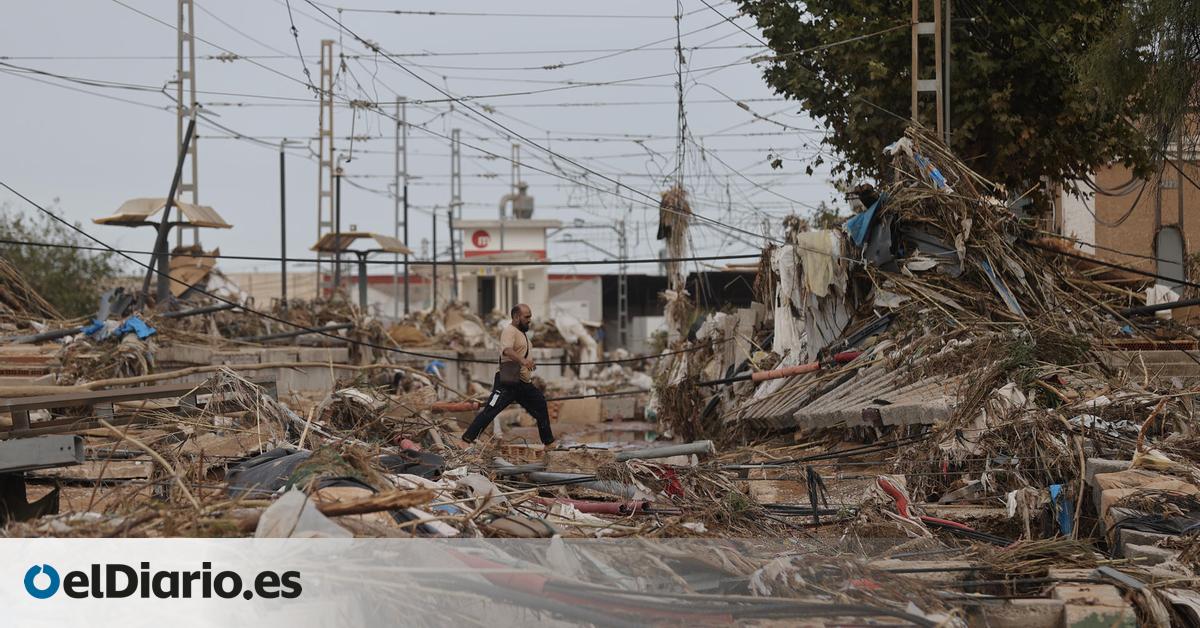
The number of fatalities left by DANA continues to increase and there are already 202 people dead as confirmed by Cecopi (the Emergency Coordination Center): “The process of surveying and identifying the victims continues.” The figures are chilling, in all of Spain there are 205, adding the two deaths in Castilla-La Mancha and the one in Malaga, and they continue to grow every day, with hundreds of people still missing. The State Meteorological Agency warned this Friday that the alert continues because the adverse situation has not yet subsided and rainfall is expected to continue throughout the weekend.
The lifeless bodies that are being recovered in the areas most affected by the storm (Paiporta, Picanya, Chiva, Utiel, Catarroja, Alfafar, Sedaví…) They are arriving little by little at Feria València after the Institute of Legal Medicine of the City of Justice in the Valencian capital has been overwhelmed by the constant arrival of fatalities. An autopsy area and another storage area for the bodies have been set up in that facility until they can be identified and delivered to the families, as confirmed by the Minister of Justice and Interior Salomé Pradas.
The consequences of this tragedy already surpass other historical natural disasters such as the Tous ‘swamp’ of 1982, caused by the failure of the dam in the Júcar riverbed; the overflowing of the Túria River as it passed through Valencia in 1957, which caused the death of 81 people; or the flood at the Las Nieves de Biescas campsite, which killed 87 people in 1996.

Crowd of people working
Thousands of people, including firefighters, members of the State security forces, members of Civil Protection, military personnel of the UME and the Army (Land, Air and Navy units) or volunteers who travel on foot or by bicycle to the most affected areas to work and lend a hand in whatever way possible (bring water, food, clothing, removing mud, clearing debris, searching for survivors, bodies…). Precisely, in some areas with easier access, such as the Torre neighborhood, in the city of Valencia, access has been cut off due to an excess of volunteers. As for the military, this Friday 500 Army personnel joined the rescue efforts, adding to the 1,200 that were already in the affected areas.
The situation in the affected areas is really complicated, with a lack of supplies for the affected residents: no running water, no drinking water, no possibility of accessing food and, in some towns, still no electricity. This situation led some people to have to enter supermarkets affected by DANA in order to stock up on basic products, such as water. For this reason, many city councils have begun to distribute water through the streets and door to door, while asking citizens to consume responsibly and not stockpile.

39 roads closed
This Friday, 126 roads remain affected in the Valencian Community as a result of the storm, and of them 39 remain closed to traffic, as reported by Emergencies. Some of the roads closed in the province of Valencia are the A-7 in different sections such as in Sagunto, in the L’Oliveral-Mas del Judge industrial estates and the AP7 in Carrasca; the N-322 in Pontón-Requena; at the intersection with the AP7 and at the Masia del Raco-Cullera. The N-330 in El Terrazo-La Rinconeda (Utiel) is also closed; the N-III in San Juan-Requena and Siete Aguas-Buñol or the V-31 between Silla and Forn d’Alcedo. For its part, the CV-50 as it passes through the Teulada ravine in Vilamarxant has been opened to traffic.
The Minister of Transport and Sustainable Mobility, Óscar Puente, has pointed out that on the State-owned roads in the province of Valencia alone there are 80 kilometers affected and has highlighted that 25 million have already been enabled in 24 hours to begin rebuilding the roads. seriously damaged by DANA on the A-7, the N-330 and the N-322.

Controversy over emergency response
On Tuesday, when the tragedy occurred, the Generalitat Valenciana was slow to act and did not send the general alarm to the mobile phones of the residents of the province of Valencia until 8:12 p.m., when the Poyo ravine, the Magro river and the Túria were already They had overflowed and there were hundreds of people trapped by the water. President Carlos Mazón has defended the actions of the Consell and has insisted that at all times the protocols and instructions of the State Meteorological Agency have been followed – the head of Climatology of the State Meteorological Agency in Valencia stated that this tragedy requires examine what has gone wrong, because people have died “in areas where it did not rain” -.
Mazón, who assumed ‘sole command’ of the emergency on Tuesday afternoon, has tried to offload responsibility to the Executive and Aemet, a theory also defended by the leader of the PP, Alberto Núñez Feijóo. Interior, for its part, has denied Mazón and Feijóo and has recalled that the territorial plans of Civil Protection are a regional competence.

Source: www.eldiario.es

